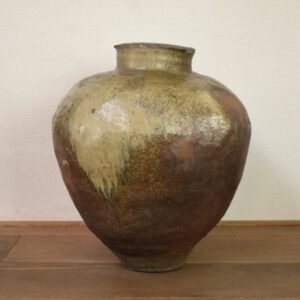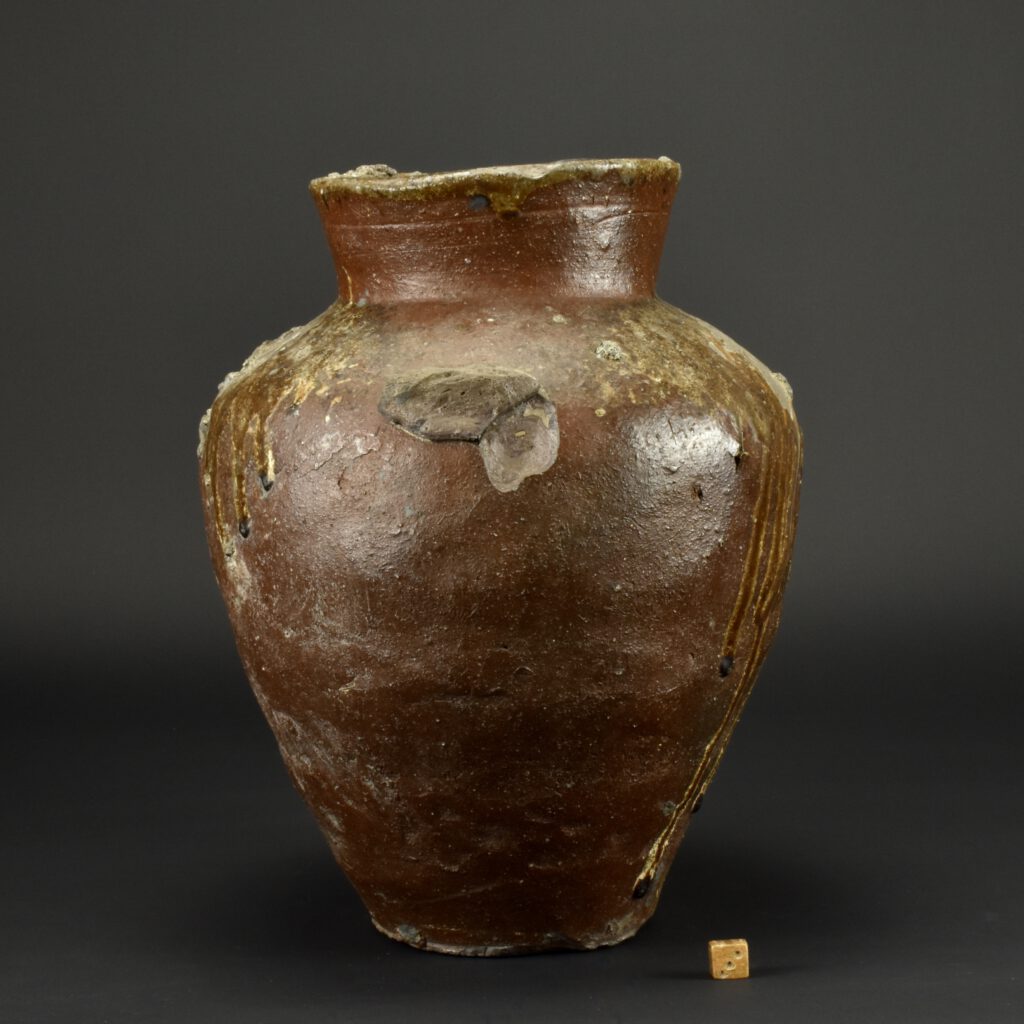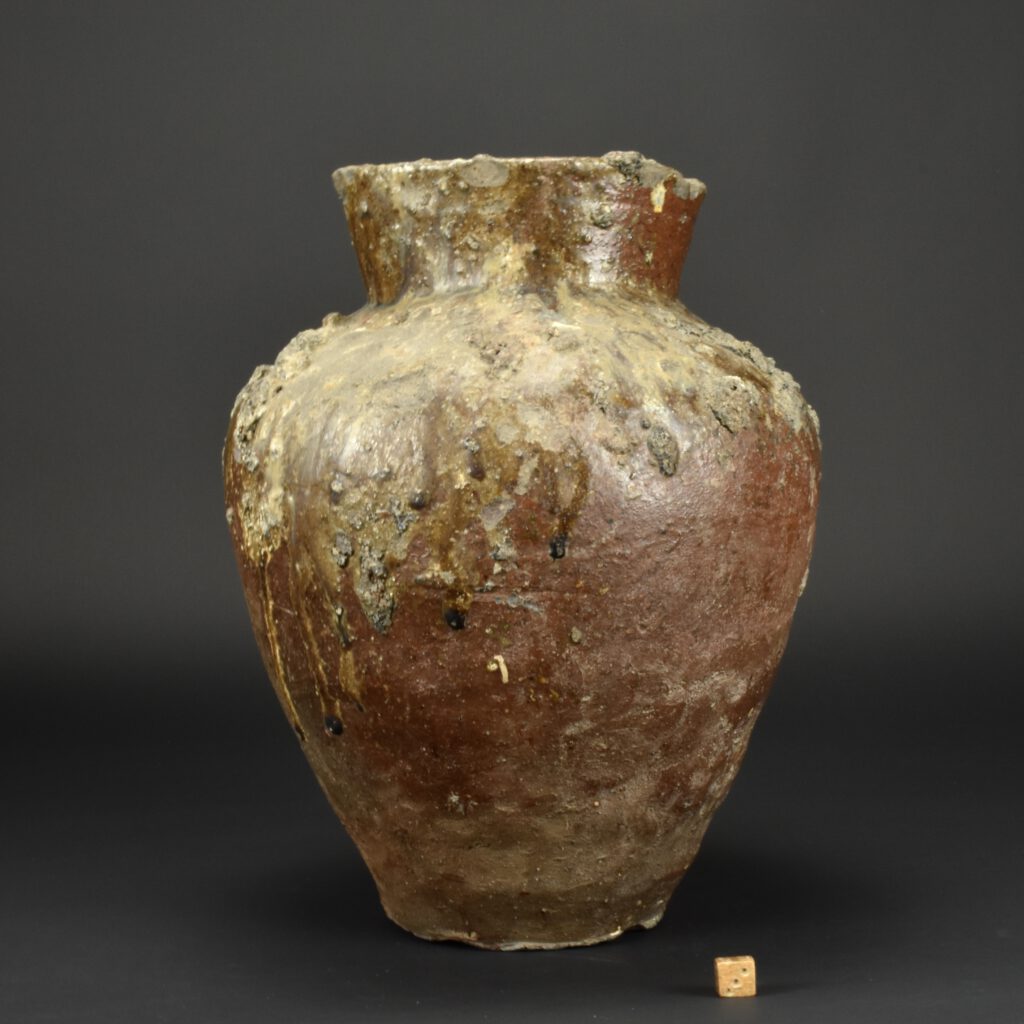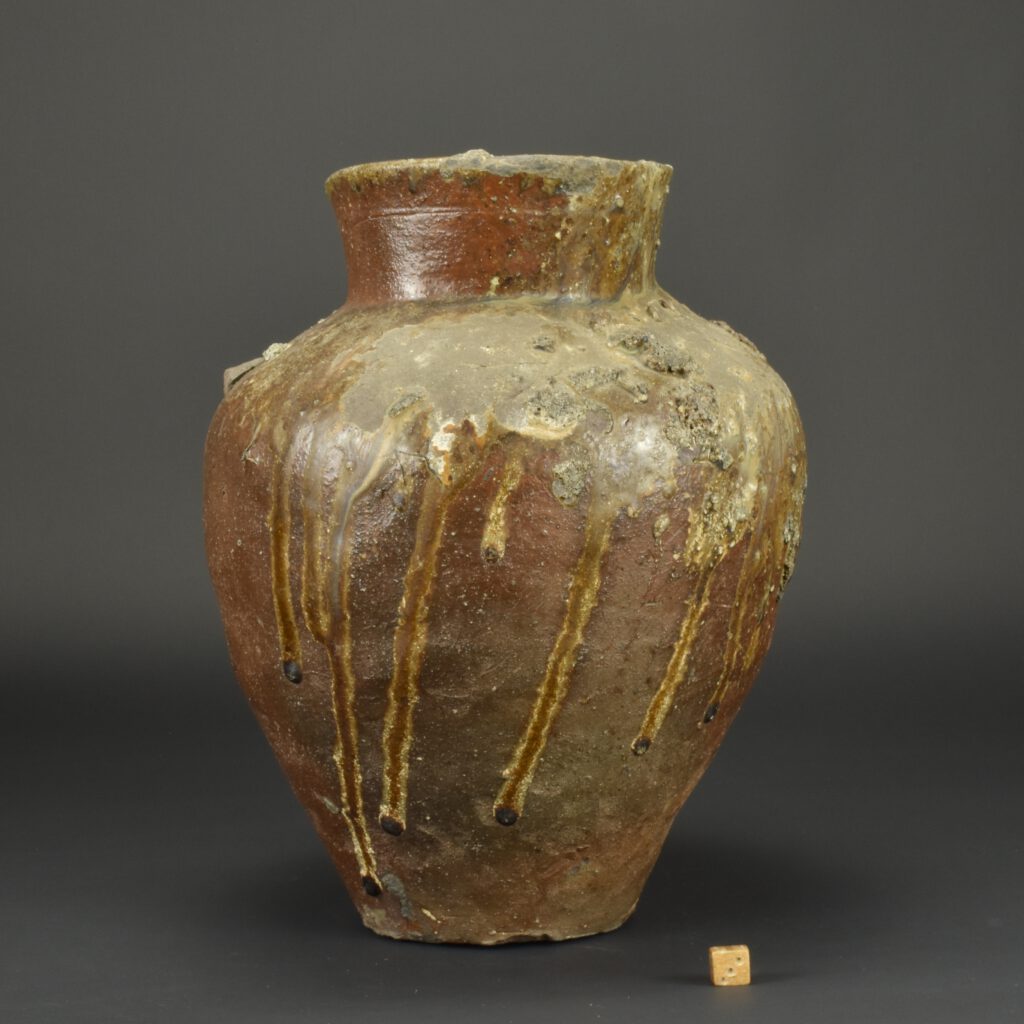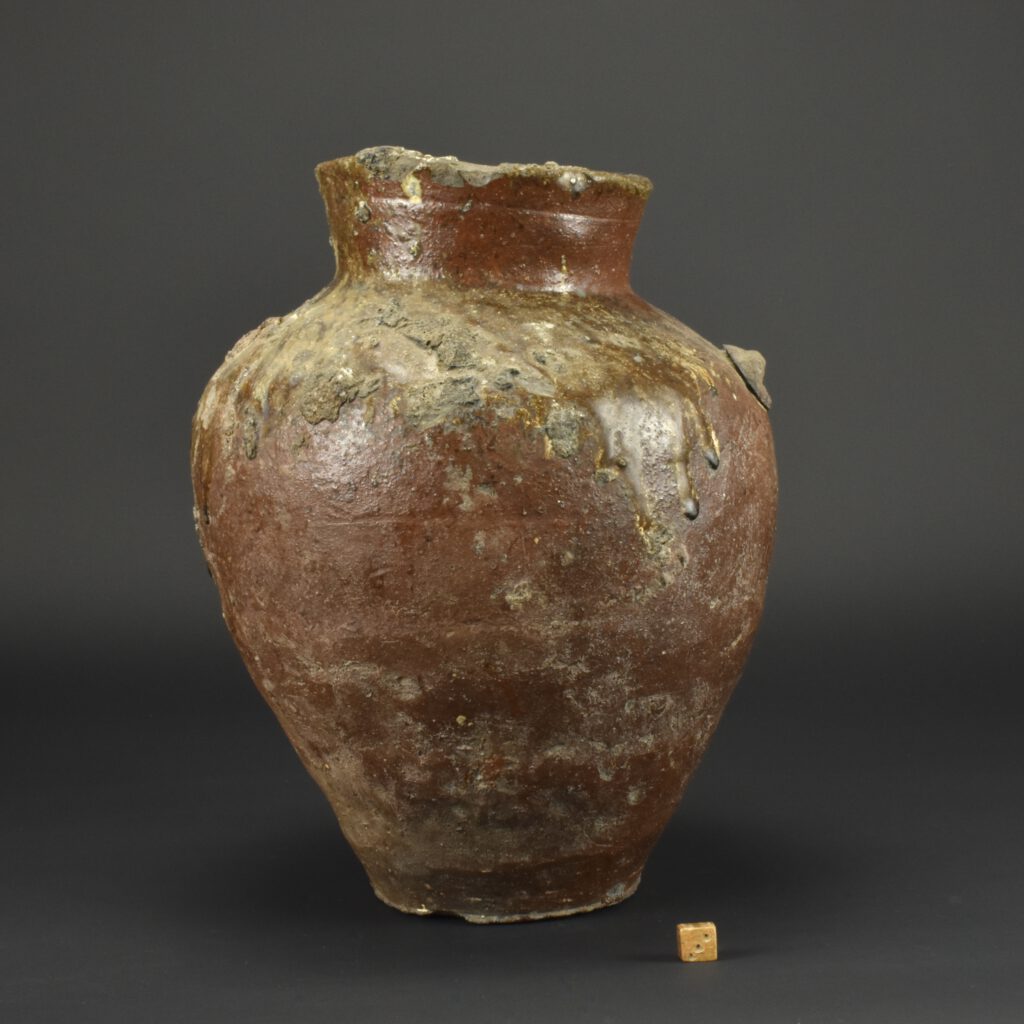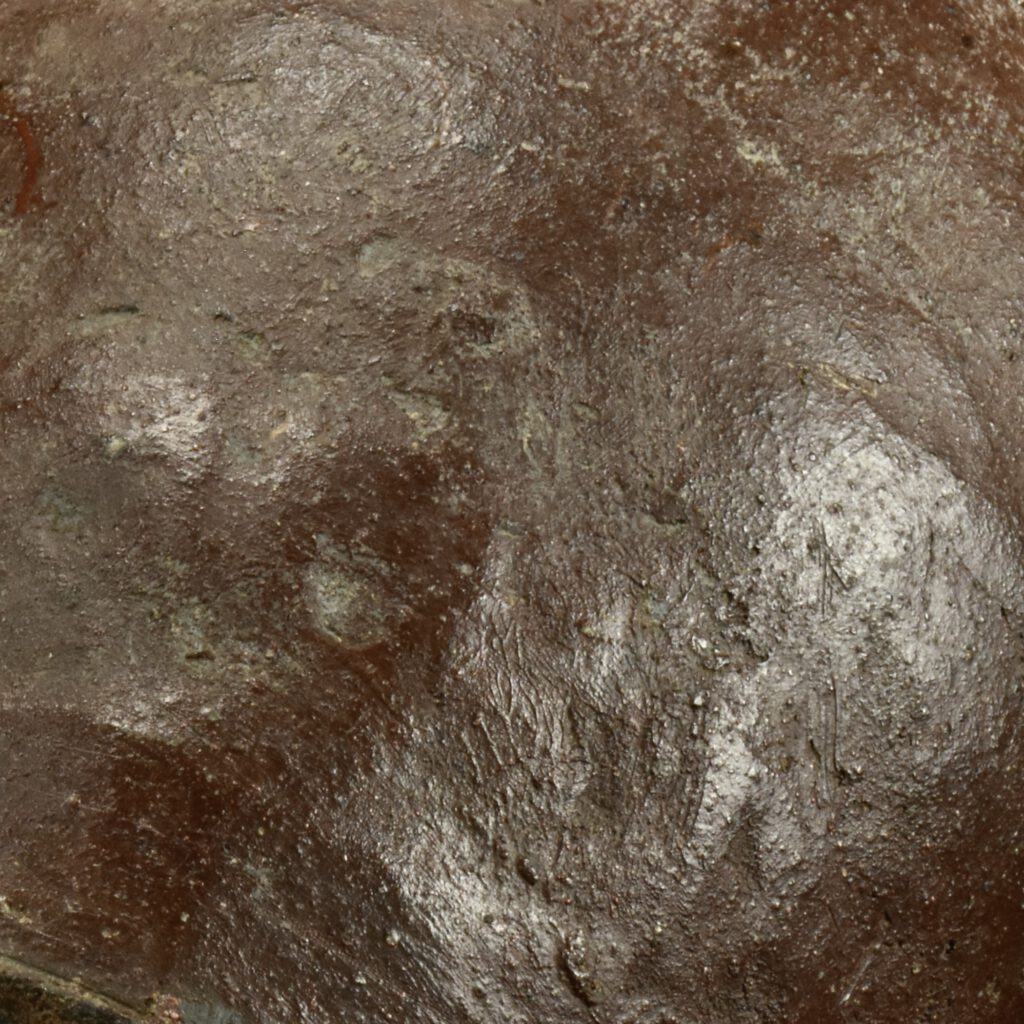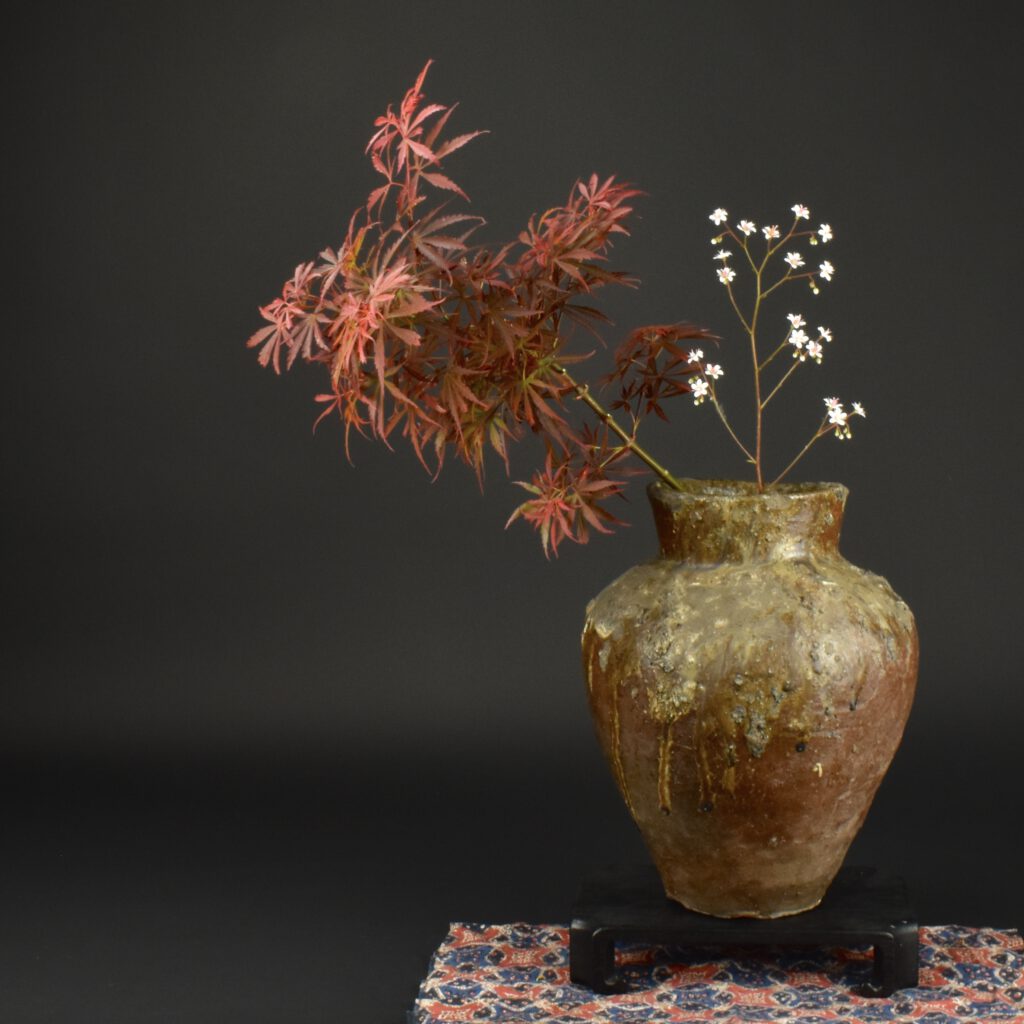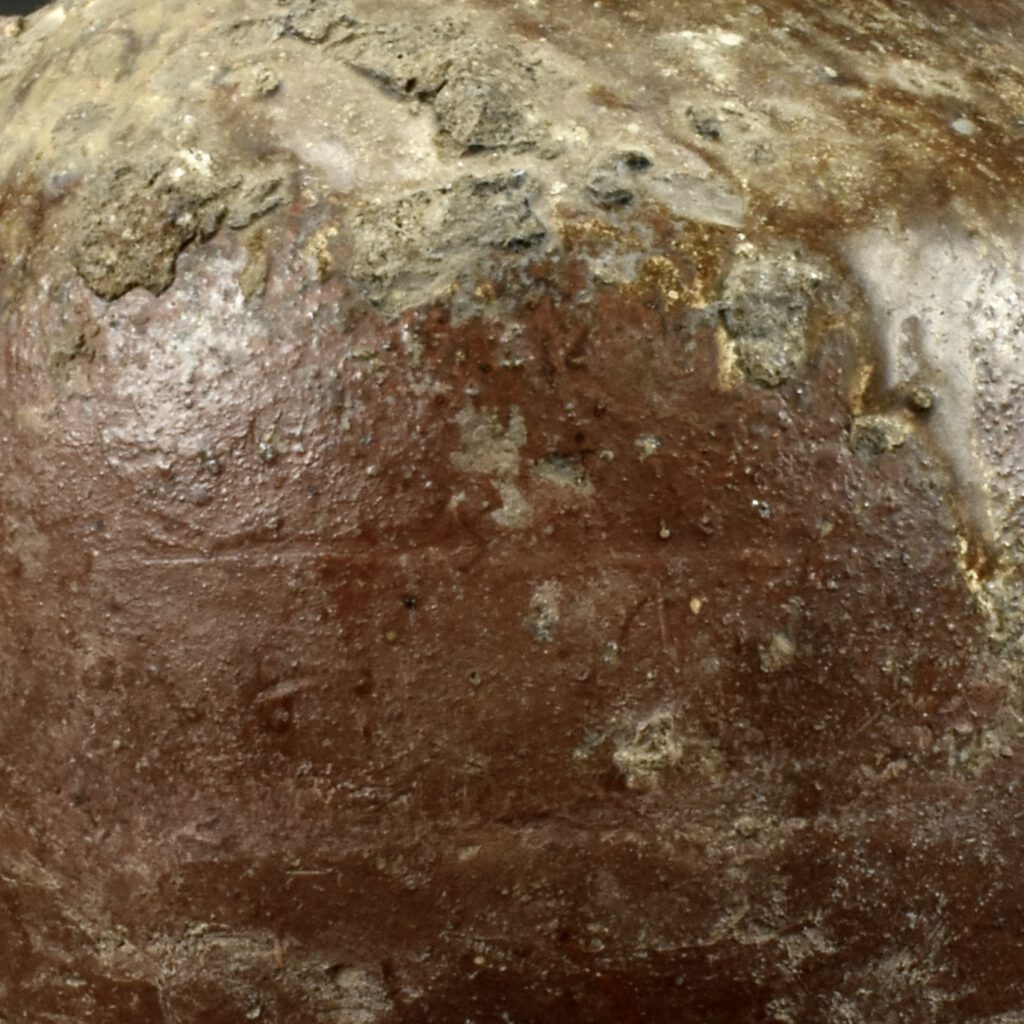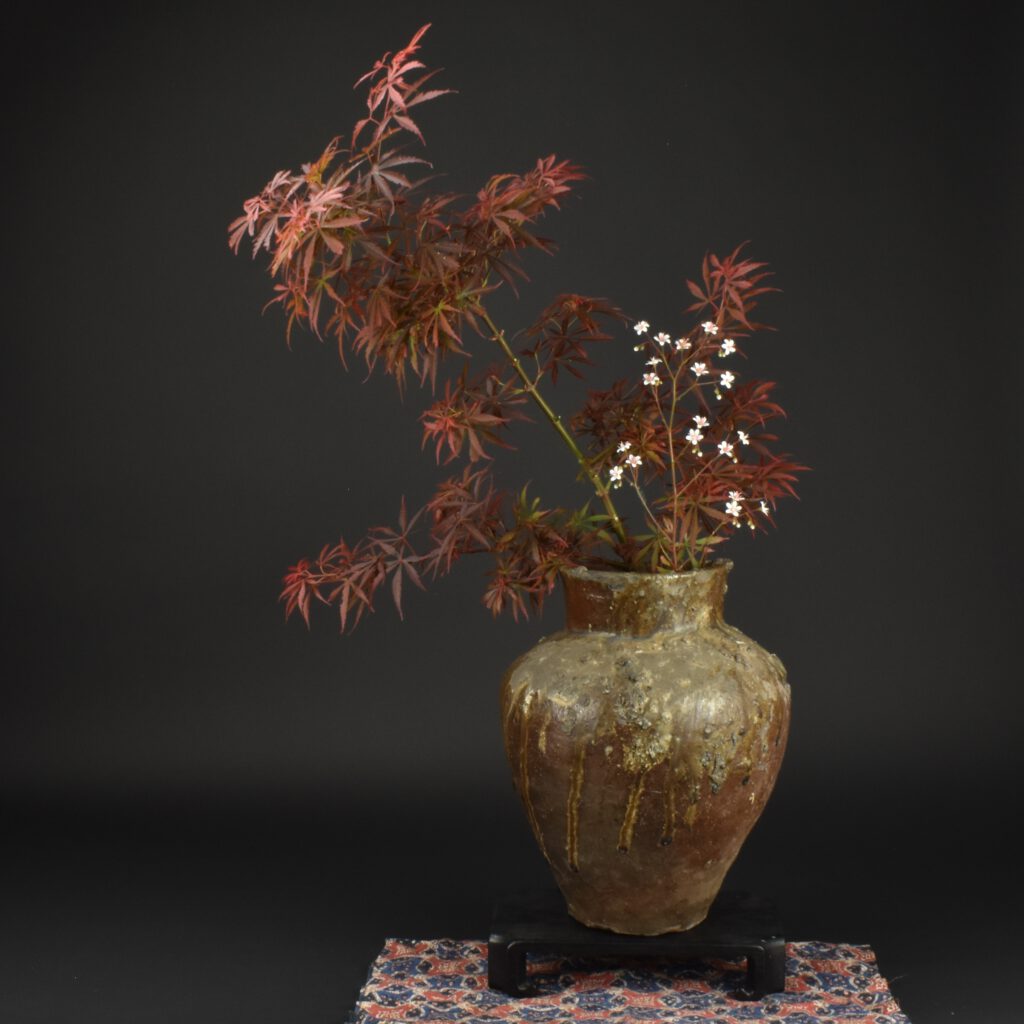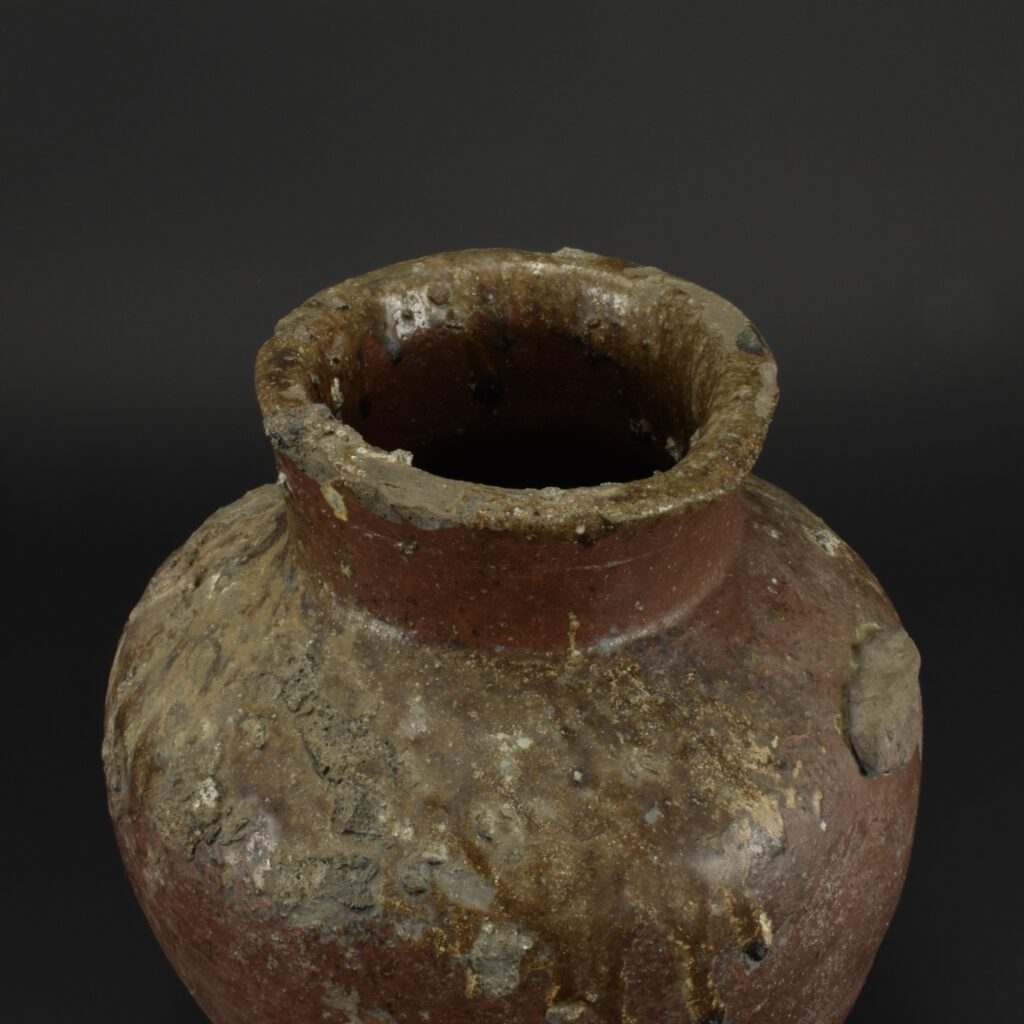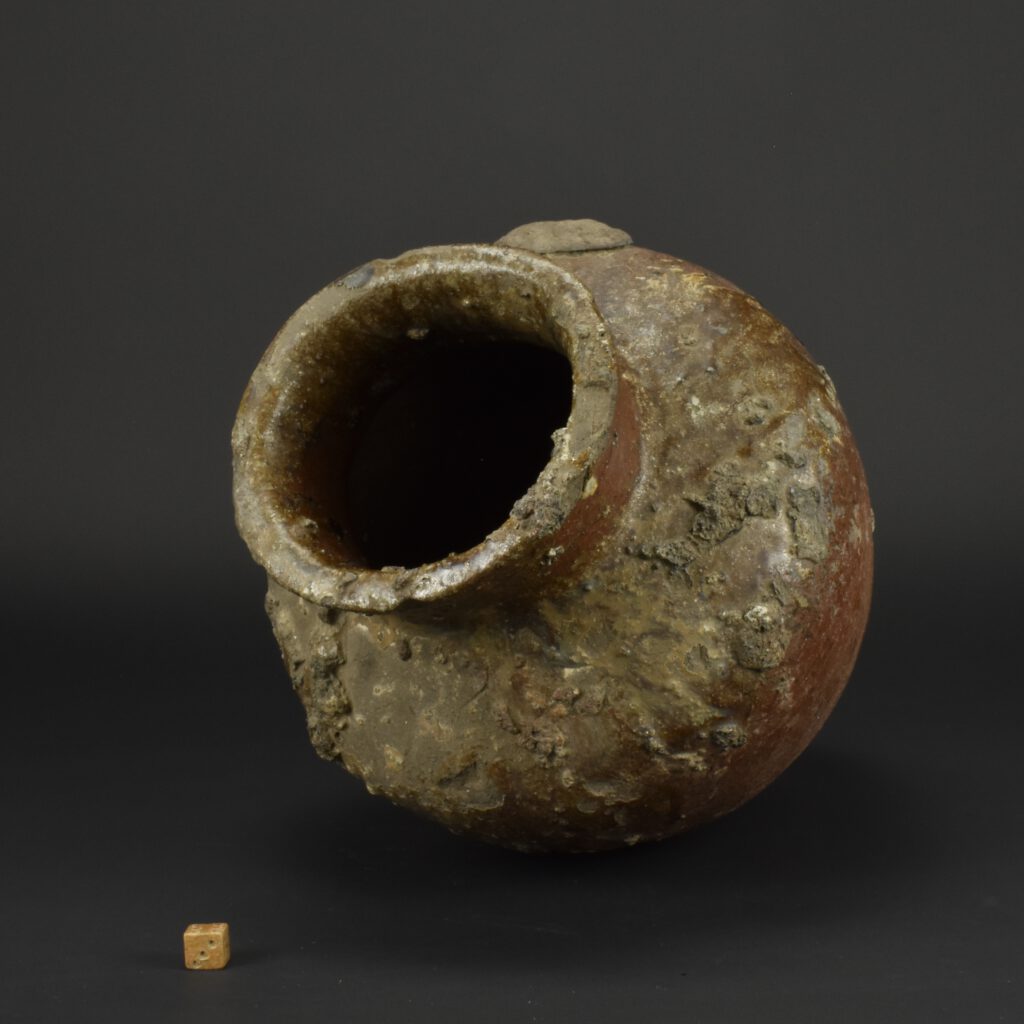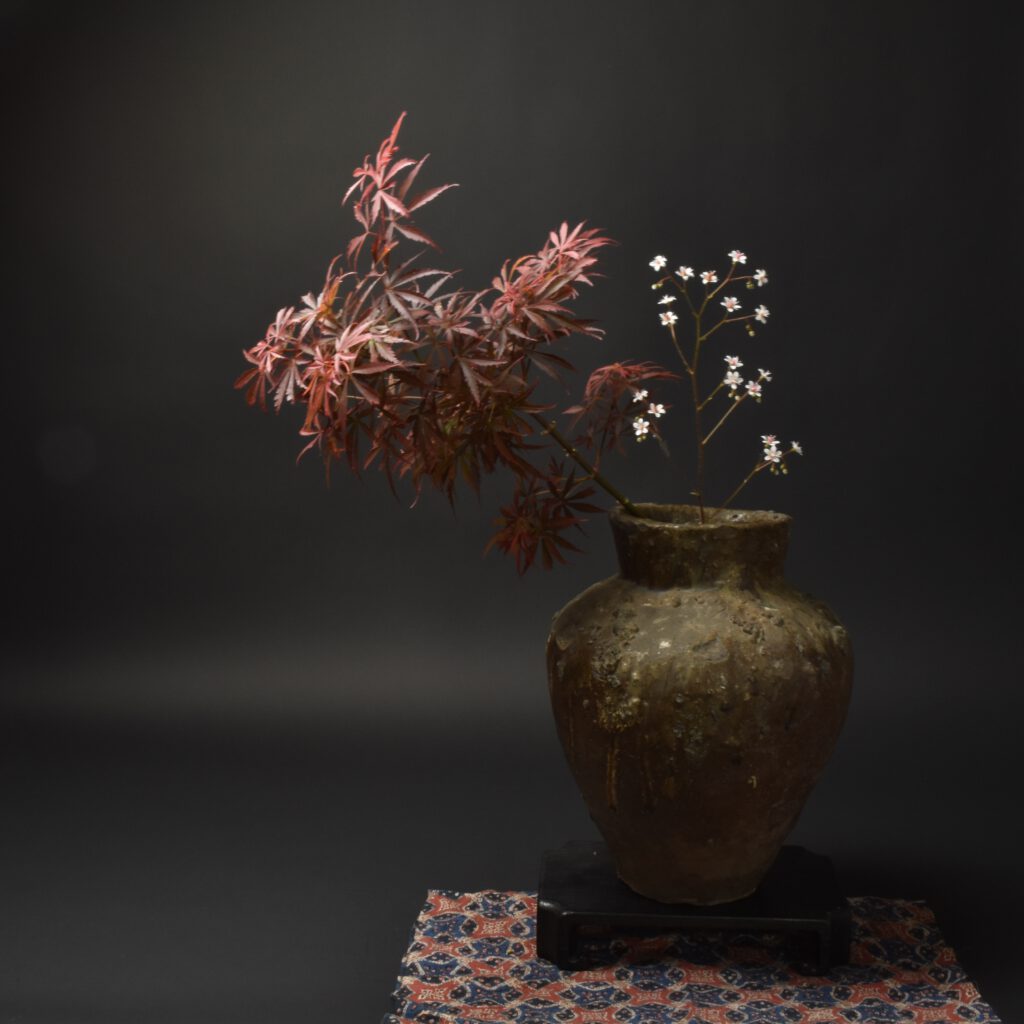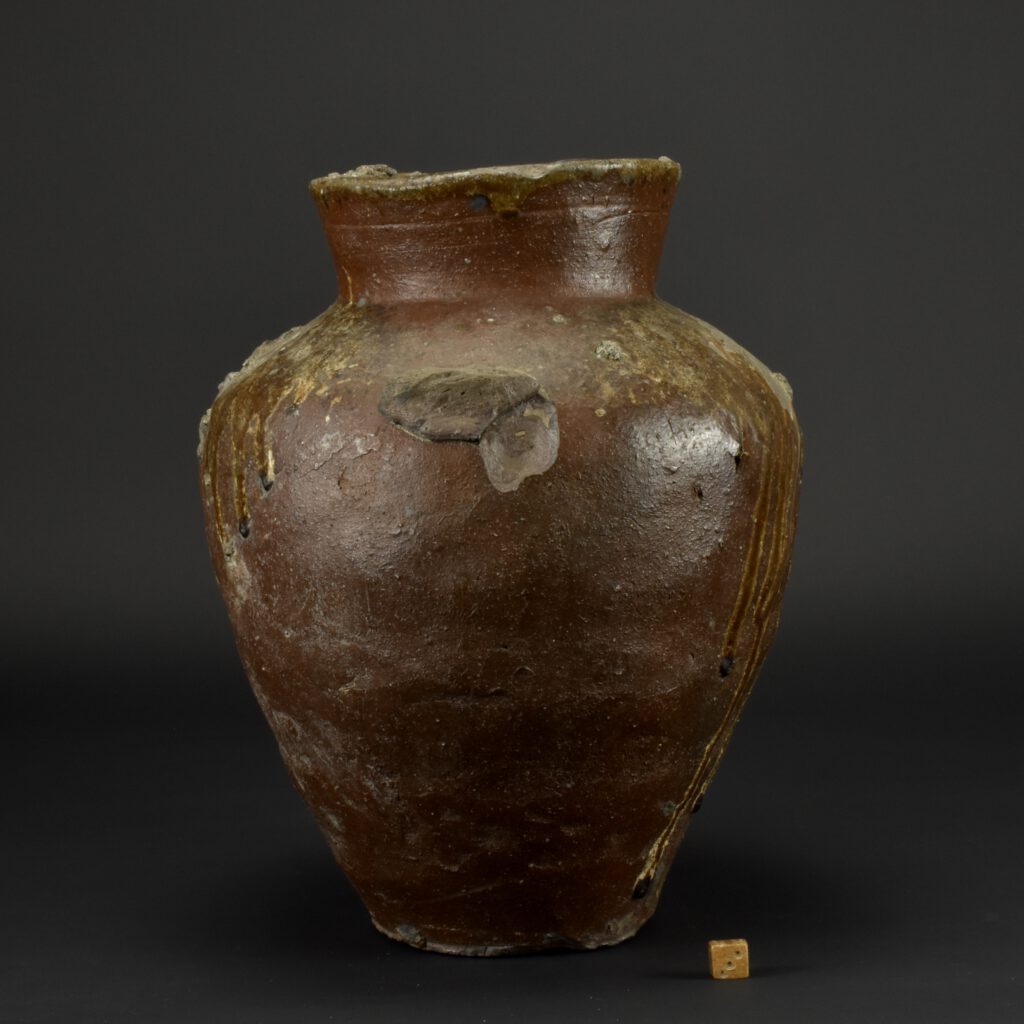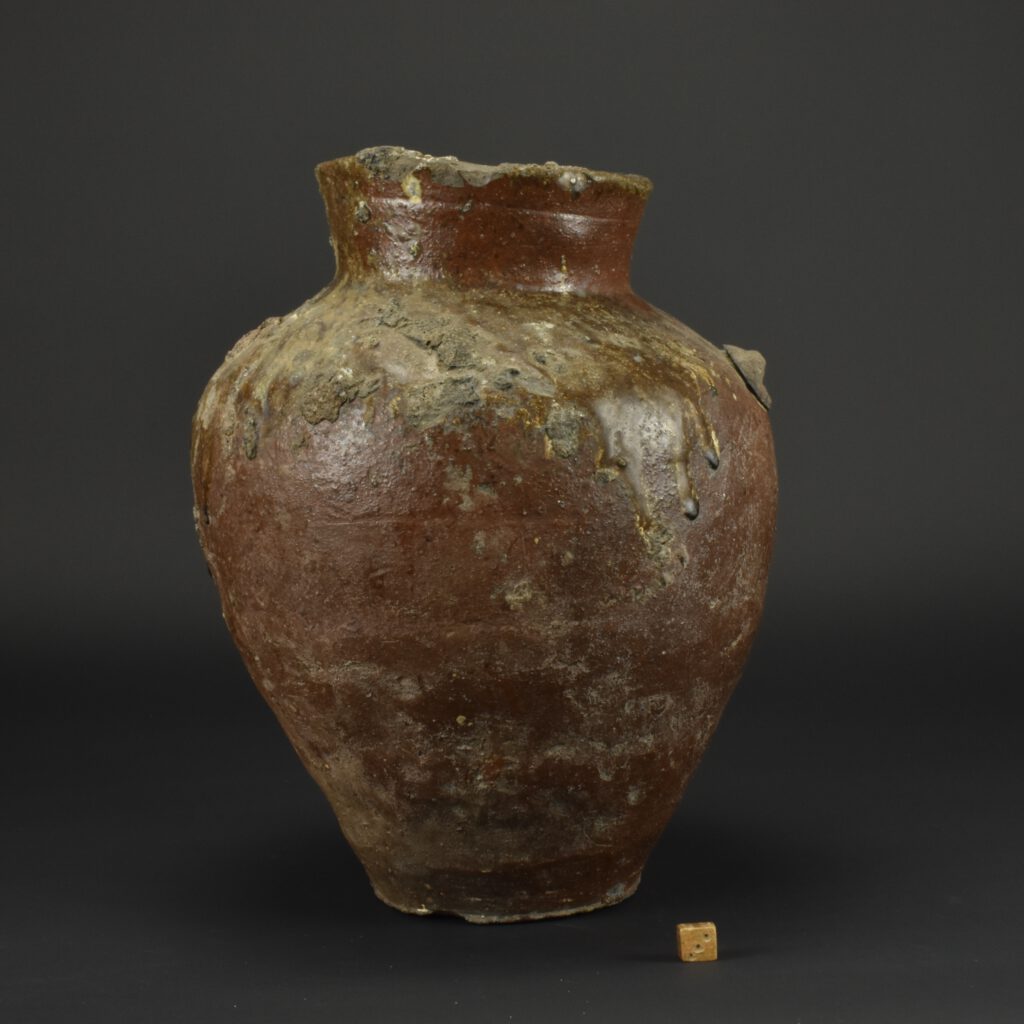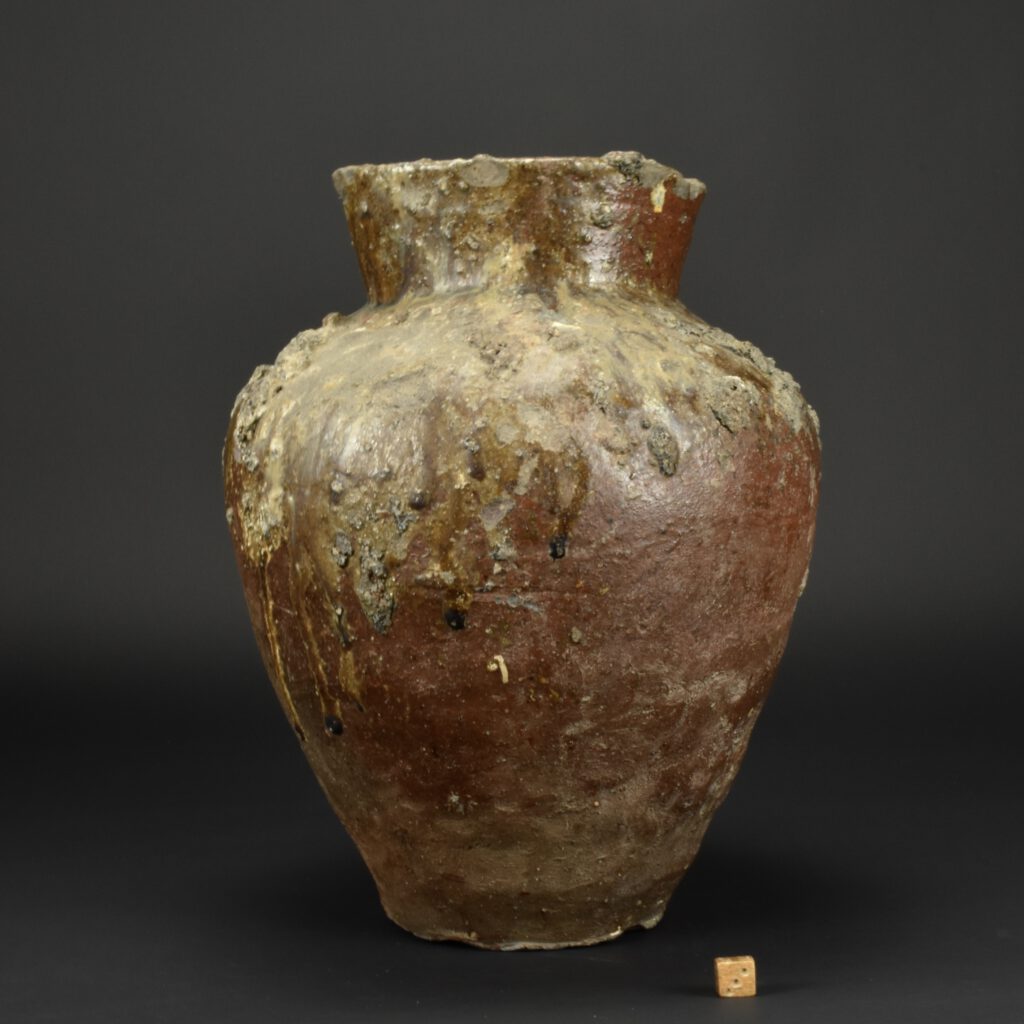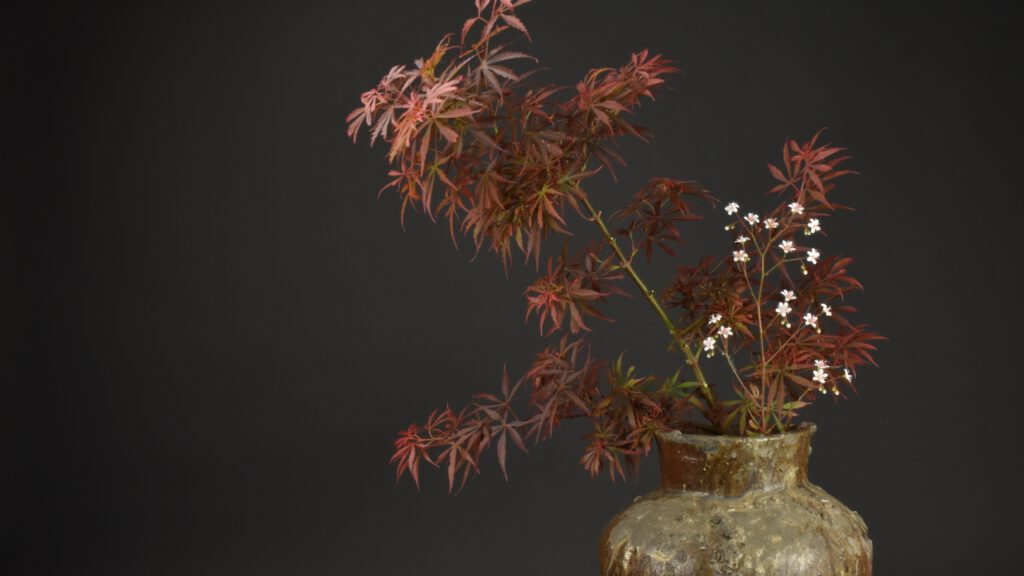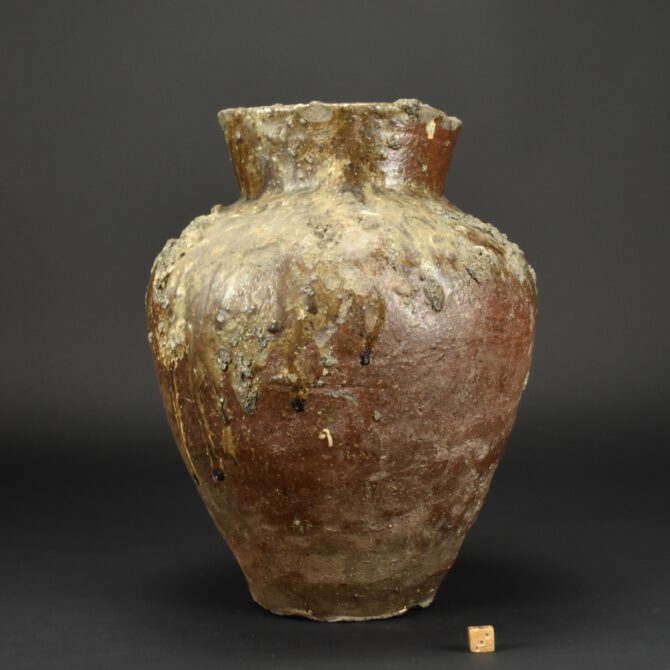
A Japanese Muromachi Period 1392 – 1573, Tokoname Stoneware Jar
A Japanese Stoneware Jar, Muromachi Period 1392 – 1573. Possibly Tokoname ware, the body has a distinct pinkish colour to it reflecting the high iron content typical of Tokoname clay. Named so after the town of Tokoname on the Chita Peninsula south of Nagoya, Tokoname ware has been produced from the eleventh century at a number of kilns in the vicinity of the town. This thickly potted, relatively small Muromachi jar is made from a dense stoneware, it is has a natural ash glaze, liberally applied to the top, and shoulders, with uneven glaze running down the side of the jar. The surface is in part unglazed on the collar, there are lumps of kiln debris around this unglazed area and two large, apparently unworked, pieces of clay at the bottom of the jar. There is also a large lump of clay to the side, probably from another pot touching it in the kiln. Presumably, the potter had to smash the two jars apart. Jars like the present example are a perfect reflection of the imperfection of wabi–sabi. The surface, contains lumps, marks where other pieces stuck to it in the kiln, small cracks and a faceted surface in places. This type of pottery surface is, in Japan, seen as a landscape that invites ones imagination to walk across its hills, rocks and ravines, to dream.
Wabi – Sabi A literal translation doesn’t work well for the Japanese concept known of Wabi-Sabi. We have imprinted in us a sense of permanence connected with the Classical order, symmetry, things being right, perfect, pristine even. We know an Imperial Qing or Sèvres vase is good quality because it tells us so. The material, fine translucent porcelain, is decorated in rich colours, even gold, the surface filled with decoration that wears its wealth in clear public view. It is perfect, and perhaps if we own it will get somewhere nearer perfection ourselves. The Japanese aesthetic of Wabi-Sabi shows us something quite different. Life is imperfect, we are imperfect, the art of life is to live with it. Perhaps, the nearest we get to permanence is the inevitable realisation that transience is part of the ebb and flow of how things are. Nothing is perfect, Wabi-Sabi allows us to see the beauty inherent in imperfection, the rustic and the melancholy. A potter’s finger marks on the surface of a pottery bowl, the roughness of a pottery. A ceramic surface can become a landscape in which the eye walks over humble cracks, uneven, faulty, the mind in austere contemplation. Wabi-Sabi can be condensed to ‘wisdom in natural simplicity’.
Wabi-Sabi stems from from Zen Buddhist thought, ‘The Three Marks of Existence’ ; impermanence, suffering and the emptiness or absence of self-nature. These ideas came to Japan from China in the Medieval Period, the Japanese have developed it over the centuries, it is integral Japanese culture and the way people see their place in the world. For example ; the Japanese tea ceremony, which is the embodiment of perfection, uses ceramics which are imperfect. It was not just the pottery made in Japan that needed to have a Wabi-Sabi nature, but also the Chinese porcelain made for the Japanese tea ceremony. During the late Ming dynasty the Chinese supplied Japan with porcelain for the tea ceremony, not just for the ceremony itself but for the meal that was taken with it, the Chinese even supplied charcoal burners for them to light their pipes. This Chinese porcelain was made at Jingdezhen to Japanese designs, that were sent from Japan. The Japanese wanted the Chinese to work against their normal way, they requested firing faults, imperfections and unevenness. The Chinese were sometimes rather too precise in their making of these imperfections, often adding faults carefully and even symmetrically. I imagined they could have thought, ‘why do our customers want us to make these things so badly’. Clearly Wabi-Sabi was lost on them.
See Below For More Photographs and Information.
SOLD
- Condition
- It doesn't look as if any damage is later.
- Size
- Height 29 cm (11 inches).
- Provenance
- N/A
- Stock number
- 27207
Information
A Massive Japanese Stoneware Ōtsubo, late Muromachi Period 1392 – 1573
Robert McPherson Sold Archive - 26220.
